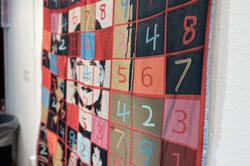Capable of creating textiles with unique structures and graphic capabilities, the new loom builds on RISD’s longstanding investment in the medium.
RISD Wintersession Course Introduces Students to Basic Elements of Textiles Design
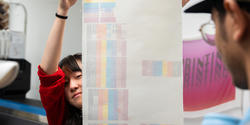
Students in a Wintersession class called Digital Print Fabric Design cram into a small corner room on the ground floor of RISD’s College Building to watch Textiles department tech Nat Luo 23 IL/TX (above) demo the Mimaki textile inkjet printer. As the machine whirs to life, Luo explains how it works. “Different inks correspond to different nozzles,” he says, “and the machine has to be cleaned a lot so that it doesn’t clog and produce streaked colors.”
Slowly, swatches of the student designs printed on paper-backed cotton twill emerge from the printer. “We made those!” someone calls out gleefully. Next, the class tromps down the spiral staircase to the basement, where faculty member April Chambers 04 TX and class TA Zach Kim 26 TX carefully roll the fabric onto a metal coil with a protective drop cloth between the layers before loading it into an industrial steamer that will heat up to 200 degrees Fahrenheit and, in the process, bring the colors to life.
“Each student will end up with about a yard and a half of their print design,” Chambers says. “We’ve been focusing this week on refining the designs and colors.”
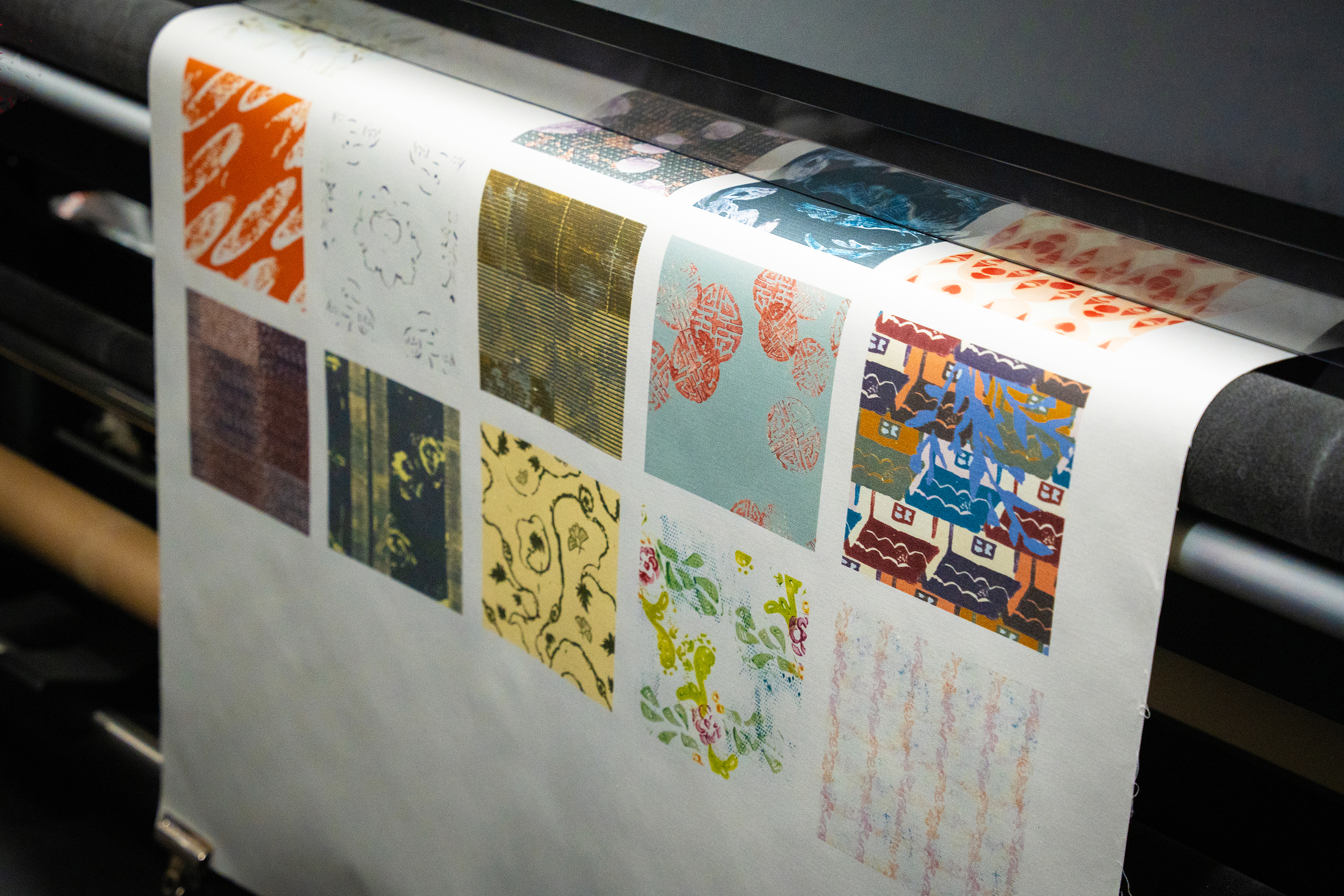
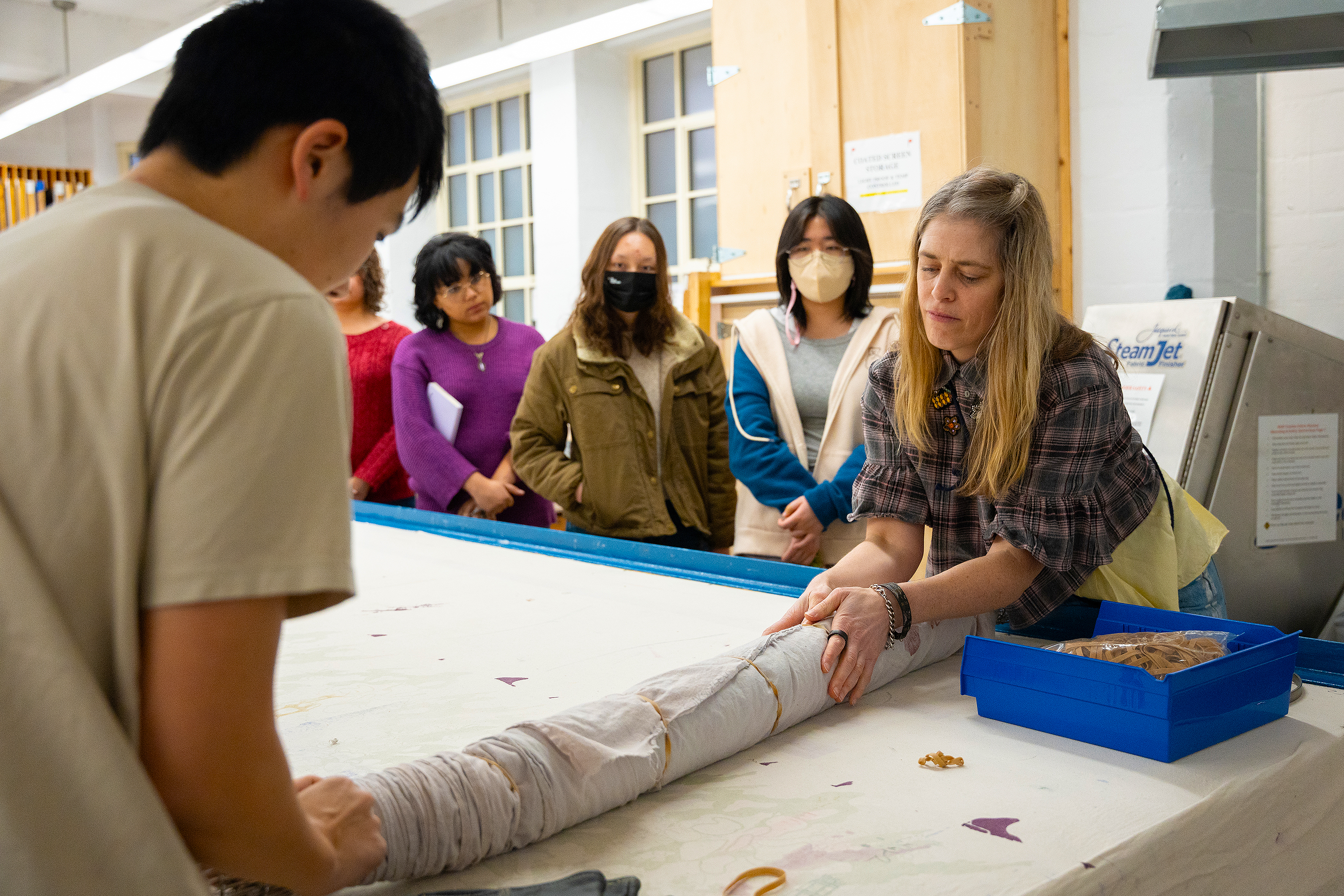
Did Chambers have access to this kind of equipment when she studied Textiles at RISD 20 years ago? “Definitely not!” she exclaims with a laugh. “We concentrated on weaving with hand looms, semi-mechanized dobbies and the Jacquard loom back then. The department has kept up with the times and offers a robust program that gives current students the tools they’ll need to move within the textiles industry after graduating.”
The course is open to students in all departments, and quite a few non-Textiles majors are giving it a try. Chambers began by introducing historical print techniques leading up to digital print technology. Students conducted independent research and developed mood and color boards to inform pattern, palette and application. The boards contained a rich collection of images, objects and color swatches that served as reference points and inspiration throughout the term. Using such techniques as drawing, painting and collage, students learned to create the basic elements of textile design: motif, texture, repeat, pattern, layout, color and scale.
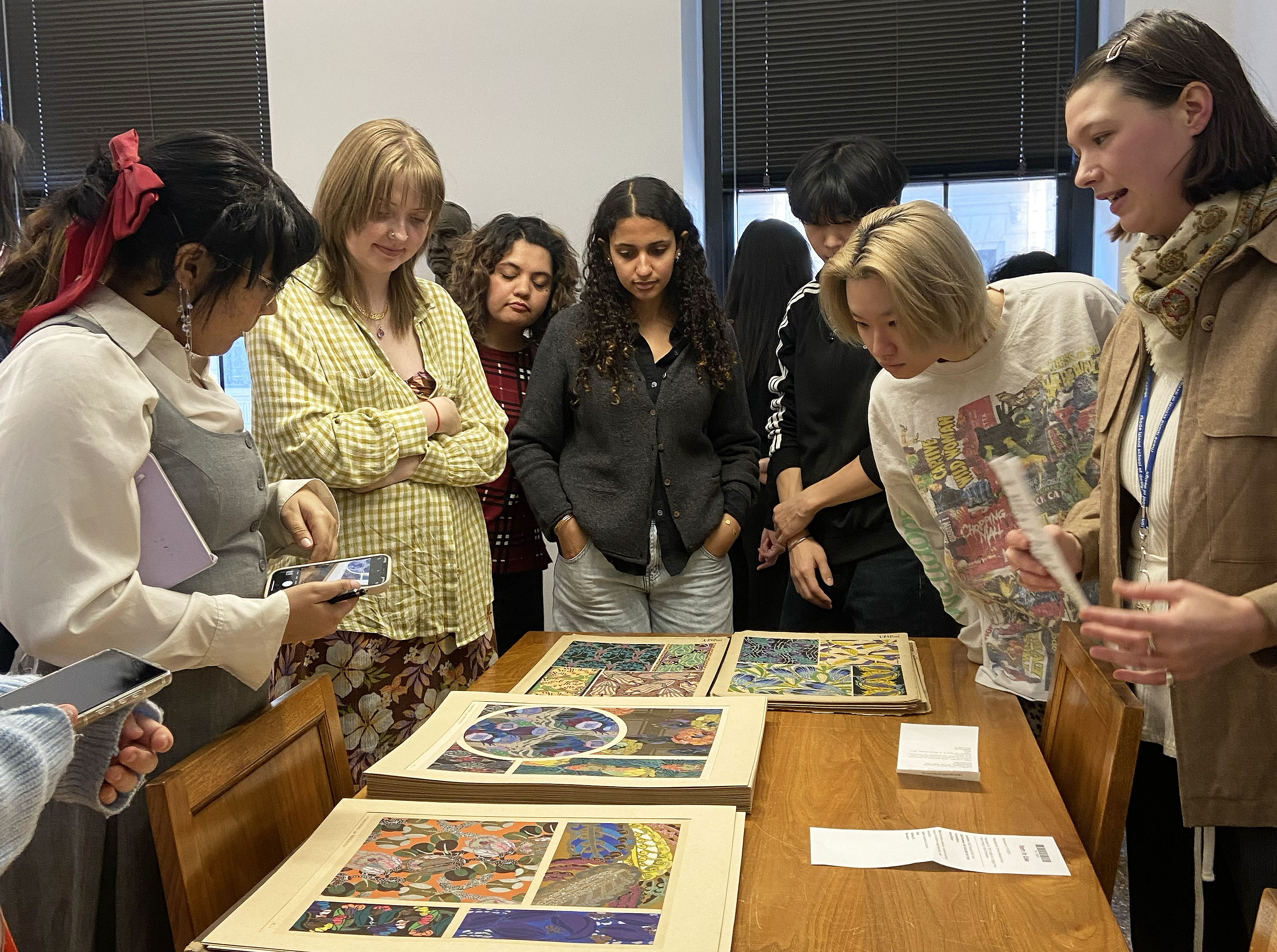
Chambers encourages the class to find inspiration outside of the digital realm and organized a visit to RISD Special Collections, where students could peruse physical designs of all sorts. “Dig deep and unearth the meaning in the pieces that inspire you,” she advised, “and then harness that creatively through the lens of textiles. Think about your theme and how you can best translate it visually through color and design.”
Working in Adobe Photoshop, students are continuing to manipulate their repeating patterns and refining their designs and color selections based on feedback provided by their peers along the way. By the end of the term, Chambers expects that each student will have built their own visual language and point of view.
Simone Solondz / studio photos by Kaylee Pugliese
January 27, 2025

